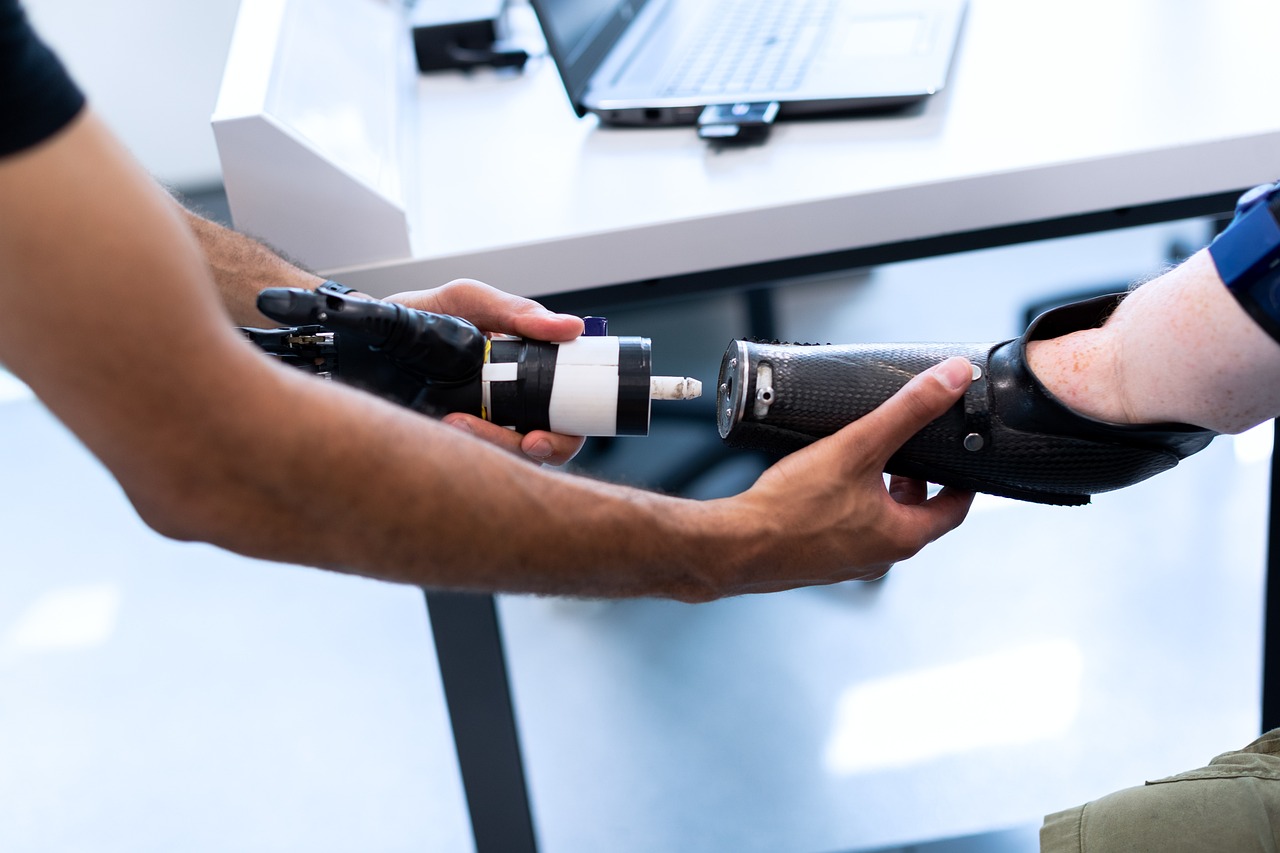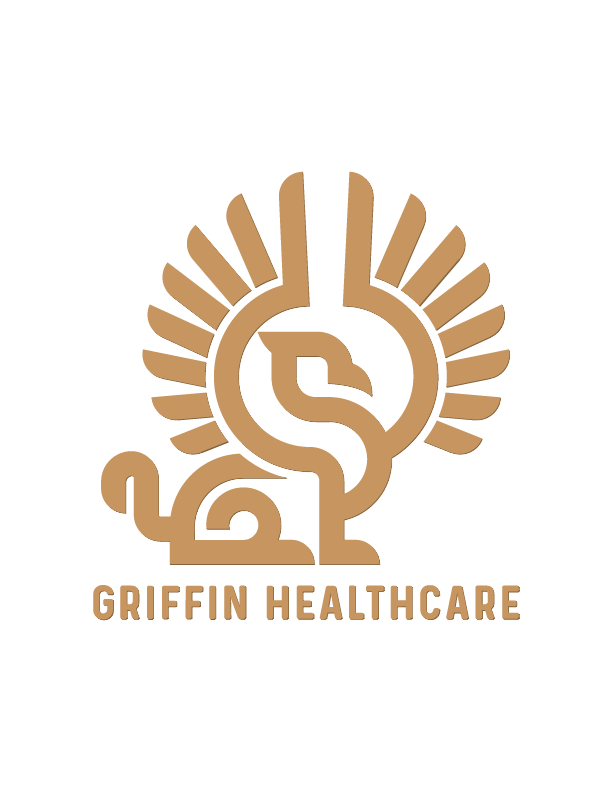Prosthetic Services

Lower Limb Prosthetics
Lower limb prosthetics refer to artificial devices that are designed to replace a missing or amputated leg. These prosthetic devices are customized to fit the individual's residual limb.
Lower limb prosthetics are designed to replace a leg that has been amputated either above the knee, below the knee, or at the ankle joint. These devices include a socket that fits over the remaining part of the leg, a rod or pylon extending from the socket, and a foot or ankle component for support and movement. Prosthetic limbs play a crucial role in enhancing the quality of life for those who have undergone amputations, helping them regain mobility, independence, and confidence.

Upper Limb Prosthetics
Upper limb prosthetics refer to artificial devices that are designed to replace a missing or amputated arm, hand, or part of the upper limb.
Upper limb prosthetics are useful for people who have lost an arm above the elbow, below the elbow, or at the wrist. These devices include a socket that fits over the remaining limb, a rod extending from the socket, and a hand or arm part for support and movement. Prosthetic limbs significantly enhance the lives of amputees by restoring mobility, independence, and confidence.

Special Prosthetics
Special prosthetics refer to custom-designed artificial limbs that are created to meet the specific needs of an individual.
Special prosthetic devices are made for people with special physical needs, like those with birth conditions, injuries, or amputations. These can be for arms, legs, or even other body parts like ears or noses. Making these special prosthetics involves a team of healthcare experts, including prosthetists, physical therapists, and doctors.
Why Choose Us?
At our prosthetic care center, we understand the challenges that come with losing a limb, and we are here to help you overcome them. Our team of experts provides compassionate care and personalized attention to ensure that you receive the right type of prosthetic for your needs and that it fits properly. With our support, you can regain your mobility and independence and get back to living a full life.
- Experience and Expertise
- Quality Products
- Comprehensive Care
- Patient-Centered Approach
- Support and Resources
We understand that adjusting to a prosthetic limb can be frustrating and difficult, especially if it doesn’t fit properly or isn’t the right type for your needs. This can make it hard to participate in everyday activities and can even lead to isolation and depression.
I am extremely happy to share my experience with Mr & Mrs Bagade. Banajini ma'am has convinced us to visit them once n both of them have discussed and suggested
me the best option limb. I am greatful to Nitin sir for patiently handling me n always available on my given timings after my office hours. I am very much confident with my new limb now and all credit goes to Griffin. Both of them are very hardworking. Nitin sir has shared many things n tricks about artificial limbs that I have never known though using limb from last 14 years.
Thank you to both of you. Stay blessed n all da very best for great future.
Mr & Mrs Bagade are very honest with their work. Their behaviour, product and services are excellent. My father is Happy with his new limb. Thanks for your support and help and on behalf of my father I wish you both, best of luck.
It is my honour to say that I am highly satisfied with the service and the products provided by Griffin Healthcare. My father’s leg got amputated, they provided a prosthetic limb with a friendly budget. The quality is
awesome and the finishing was excellent. Their after sales service was also great. Now he is really happy to get a new limb back again
Mr. Nitin is extremely knowledgeable and he is the best in his field, he is very professional and he cares a lot about his patients and well-being. Mrs Banojini was very kind and helpful. I expressed my concern about certain questions regarding the orthosis that we ordered and he politely offered a solution to the issues we had
Don't Let Amputation Hold You Back - Our Team of Experts Can Help

Below Knee Prosthesis

Above Knee Prosthesis

Bionic Prosthetic Lower Limbs

Cosmesis Prosthesis

Below Elbow Prosthesis

Above Elbow Prosthesis

Rotationplasty Prosthesis

Waterproof (AQUA LIMB) Prosthesis

Sports (RUNNING)Prosthesis
Our Associations
Manufacturers and Distributors








FAQ's
Some people are ready for their temporary prosthesis as early as 2-weeks following the
removal of all staples and sutures. This will vary from person to person. As a general rule,
when the surgical site is fully healed and most of the swelling has disappeared, you will be
ready for the next step. Each patient’s healing time differs depending on their overall health
condition.
You should wear your shrinker 23 hours per day (unless told differently by your physician)
and change it every other day. If you do not have a second shrinker, another one can be
purchased, Your shrinker should be removed when bathing, and if any numbness or tingling
occurs.
Walking will vary because healing is different for each person. On average, healing time will
range from 1-3 months. However, it could be longer for patients with diabetes or other
health related issues. Your ability to walk is determined by how hard you work in therapy,
and regain strength and range of motion.
Phantom pain will also vary from person to person. Some people never experience it, while
others experience it from time to time forever. Often times when you are fit with your
prosthesis, the pain or sensation may decrease due to the total contact provided by the
socket. Sometimes, stump shrinkers also provide relief and there are a number of
techniques that can be used to reduce phantom pains that your therapist will discuss with
you.
Physical and Occupational Therapy plays a very important part in your rehabilitation
process. You will learn new techniques for walking which are key to a speedy recovery.
The fabrication of a prosthesis is a very labor intensive process, requiring multiple fittings to
ensure the best fit. we can obtain all of the parts from manufacturers. And can obtain best
possible fit of the prosthesis
Griffin Healthcare uses state of the art materials and componentry. This includes plastics, acrylics, polyester laminates, titanium, carbon graphite, aluminum and steel. The type of componentry used will be customised based on weight capacity and what is best for your optimal function. Insurance coverage also will determine what type of componentry will be used.
On average, most patients will wear a temporary prosthesis for 6 months to 1 year depending on how quickly the residual limb stabilizes.
Below knee amputee – 9% more energy than a non-amputee
Above knee amputee – 60% more energy than a non-amputee
Bilateral below knee amputee – 180% more energy than a non-amputee
Bilateral above knee amputee – 260% more energy than a non-amputee
Yes, your residual limb will shrink as the swelling goes down and will change from a bulbous shape to a thinner, cone like shape. There are various methods used for reducing the swelling that include wrapping the limb, and exercises.
Your liner should be washed every night. Make sure it is cleaned thoroughly to remove any layers of bacteria/dirt build-up. In addition, you should disinfect your liner once a week by cleaning it with rubbing alcohol.
Not necessarily, however, better and more efficient service can be provided when we see
patients in our Clinic. This allows us to access the tools in our lab and allows us to make adjustments to your prosthesis quickly and efficiently. If transportation and/or physical challenges are difficult for you, a home visit can be arranged by calling our Clinic.
The number of renovations to your home will depend upon your personal needs. Many patients will need a shower chair (Med Supply carries a number of options which can be found here), detachable shower head and grab rails for the bathroom. You may also need to consider a ramp for the entrance to your home.
Yes, there are amputees involved in just about every sport. If you have participated in sports prior to your amputation, you can probably continue afterwards. Many sports have organised programs for amputees. Please be sure and let your prosthetist know about your desire to play sports, so they can design your prosthesis with that in mind. Most sport-specific prosthetics are not covered by insurance, you may incur an out-of-pocket cost.
Speak with your Prosthetist about this, Griffin Healthcare will work with you to customize your prosthesis to your liking!
